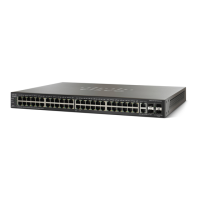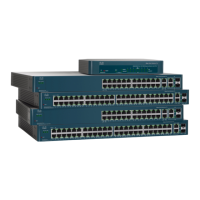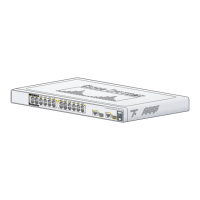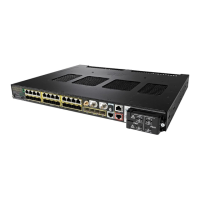IP Configuration
IPv4 Management and Interfaces
347 Cisco 500 Series Managed Switch Administration Guide
18
NOTE The device software consumes one VLAN ID (VID) for every IP
address configured on a port or LAG. The device takes the first VID that is
not used starting from 4094.
To configure the IPv4 addresses:
STEP 1 Click IP Configuration > IPv4 Management and Interfaces > IPv4 Interface.
For SG500X devices only, to enable IPv4 routing, check the Enable box. In Sx500
devices, when you change the system mode from Layer 2 to Layer 3 it
automatically enables IP routing.
STEP 2 Select IPv4 Routing to enable the device to function as an IPv4 router.
STEP 3 Click Apply. The parameter is saved to the Running Configuration file.
This page displays the following fields in the IPv4 Interface Table:
• Interface—Interface for which the IP address is defined.
• IP Address Type—IP address defined as static or DHCP.
- DHCP—Received from DHCP server.
- Static—Entered manually.
• IP Address—Configured IP address for the interface.
• Mask—Configured IP address mask.
• Status—Results of the IP address duplication check.
- Tent a t i v e—There is no final result for the IP address duplication check.
- Valid—The IP address collision check was completed, and no IP address
collision was detected.
- Valid-Duplicated—The IP address duplication check was completed,
and a duplicate IP address was detected.
- Duplicated—A duplicated IP address was detected for the default IP
address.
- Delayed—The assignment of the IP address is delayed for 60 second if
DHCP Client is enabled on startup in order to give time to discover DHCP
address.

